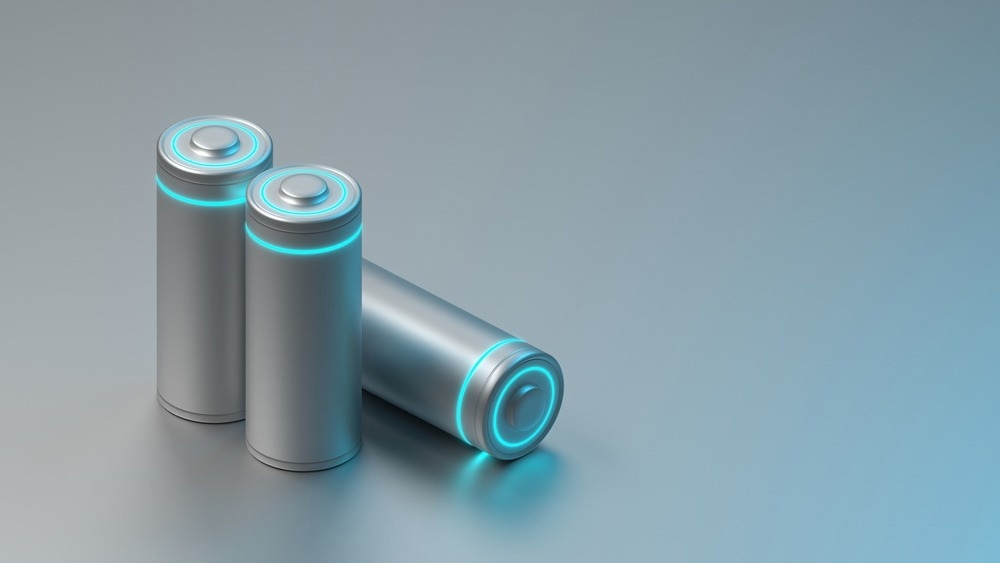Writing in the journal ACS Applied Energy Materials, a team of scientists from three universities in China has investigated the optimization of carbon nitride anodes for use in next-generation sodium-ion batteries.

Study: Tuning N-Species of Graphitic Carbon Nitride for High-Performance Anode in Sodium Ion Battery. Image Credit: RESTOCK images/Shutterstock.com
Alkali Metal Ion Batteries
Batteries offer a reliable and efficient solution to energy storage issues. Whilst lithium-ion batteries have been widely researched in recent years, there are issues that include resource scarcity.
Alkali metal ion batteries, such as sodium-ion batteries, have been widely touted as a next-generation energy storage solution to overcome the issues with conventional lithium-ion batteries.
Sodium is an incredibly abundant resource, the production of devices is cost-effective, and batteries using sodium ions do not present issues with long charge times which can cause damage, self-discharge, and degradation in conventional batteries. Presently, the technology is in the initial stages of development, with full commercialization some way off.
Anodes for Alkali Ion Batteries
The selection of appropriate materials for the various components of alkali ion batteries such as sodium-ion batteries is crucial to ensure optimal mechanical and electrochemical performance. Amongst device components, anodes are critical for battery function.
Carbon nitride has been investigated in recent years for use as an anode material in alkali ion batteries. However, this material is hindered by its poor cycle performance and low specific discharge capacity. Studies have highlighted the low initial discharge capacity and poor capacity retention of pure carbon nitride.
Research has indicated that poor electrochemical activity is due to unsatisfactory electronic conductivity and post-metal intercalation issues with crystalline structure in the material. Both pyridinic and graphitic nitrogen is related to the enhanced discharge capacities and poor cycling performance in graphitic carbon anodes. Currently, carbon nitride is used as a support material or substrate.
Several effective strategies have been developed in recent studies to overcome the issues with this anode material. For instance, SBS-modified asphalt and urea have been employed as raw materials in composites, improving the reversible capacity and cyclic life of carbon nitride.
Other studies have employed approaches such as molten-salt methods. However, these processes possess issues with complex preparation methods, poor rate capacities, and poor contact between carbon and graphitic carbon nitride. Moreover, they cannot satisfactorily achieve an even distribution due to harsh mixing processes which limits their electrical conductivity.
The Research
The paper has demonstrated a novel preparation route for carbon nitride anode materials. An amorphous carbon and graphitic carbon nitride composite was produced using a calcination process wherein a gel-coated bulk graphitic carbon nitride was prepared in nitrogen gas.
A simple and low-cost sol-gel preparation method, it addresses the issues with conventional carbon nitride anode fabrication. Uniform dispersion is achieved using this novel process, creating an even coating of gel which can be easily mass produced.
The process is simultaneous, achieving both gel carbonization and pyrolysis of bulk materials. Particle aggregation during the calcination process was avoided. Proliferation of enhanced levels of pyridinic nitrogen is attained and the composite has a fluffy structure. The structure was characterized by the authors.
Charge transfer is improved by the uniform coating on the carbon layer, and volume change during sodiation and desodiation of the graphitic carbon nitride is limited. Moreover, the active sites, structural stability, and sodium ion diffusion rate are enhanced by this innovative approach. Anodes produced using the method demonstrated in the research possess superior long-term cyclic stability and discharge capacity.
Excellent rate performance was also achieved. The excellent performance of batteries using these anodic materials will aid the commercialization of sodium ion batteries, providing significant benefits for the energy storage industry.
In Summary
The research has demonstrated a facile, low-cost sol-gel preparation method that improves the manufacture of alkali ion battery anodes using carbon nitride. The prepared anodes display sufficient performance for use in next-generation energy storage devices.
As the world moves toward net zero carbon, innovative solutions are vital to overcoming the issues humanity faces in the 21st century. Whilst lithium-ion batteries are a commonly used battery variant, the issues with lithium resource scarcity hinder their long-term application. Whilst solutions have been offered to this problem, such as reusing battery waste to recover resources, another approach is needed.
Sodium-ion batteries do not suffer from the resource scarcity of their lithium-based cousins, and offer comparable and, sometimes, superior performance capacities. Whilst the technology is still in its infancy, the new paper in ACS Applied Energy Materials provides a useful addition to the growing body of research on these incredibly useful energy storage solutions which will help future studies.
Further Reading
Zhou, P et al. (2022) Tuning N-Species of Graphitic Carbon Nitride for High-Performance Anode in Sodium Ion Battery ACS Applied Energy Materials [online] pubs.acs.org. Available at: https://doi.org/10.1021/acsaem.2c01700
Disclaimer: The views expressed here are those of the author expressed in their private capacity and do not necessarily represent the views of AZoM.com Limited T/A AZoNetwork the owner and operator of this website. This disclaimer forms part of the Terms and conditions of use of this website.